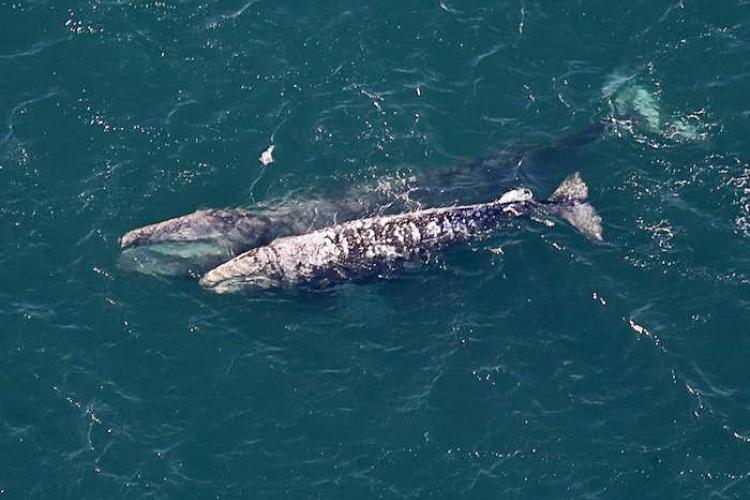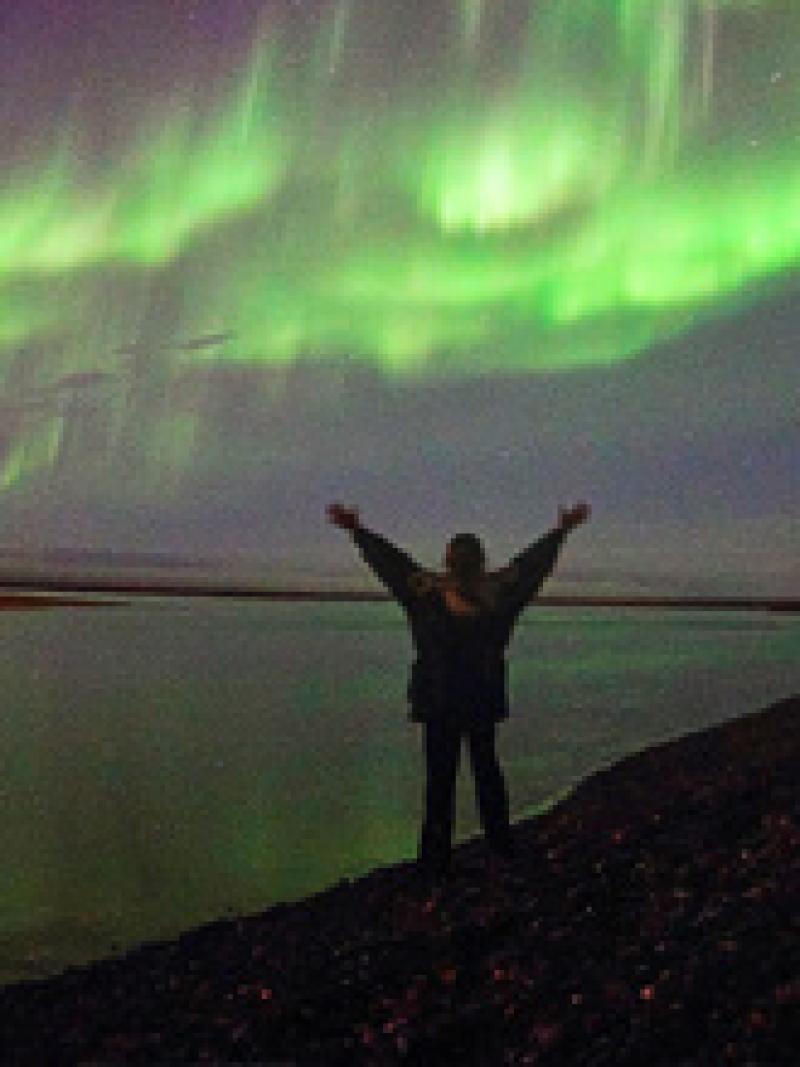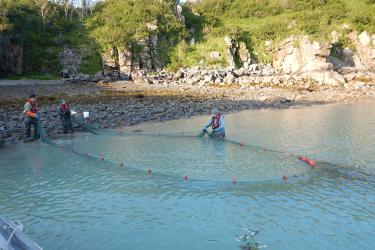The new season of the Aerial Surveys of Arctic Marine Mammals (ASAMM) has started!! The team assembled in Utqiaġvik (Barrow) and began surveying the Chukchi Sea off the north slope of Alaska right away. Right off the bat, the observers found feeding gray whales about 25-50 miles from shore. Gray whales are baleen whales; they have between 130-180 coarse off-white plates of baleen, ranging 2-10 inches long. Baleen is made of keratin, the same material as our own hair and fingernails. These plates are lined up like teeth on a comb and hang down from the upper jaw where they act as a sieve to strain out all the goodies that baleen whales fill their mouths with, including water and mud.
![This image of a feeding gray whale was taken in the Chukchi Sea in 2019.]()
This image of a feeding gray whale was taken in the Chukchi Sea in 2019.
![ASAMM-image4-post2.png]()
This image of a feeding gray whale in the Chukchi Sea was taken in 2019. Note the turn the whale took during the flushing stage of its feeding bout.
Gray whales are the only baleen whales that are bottom feeders (although they are known to feed in the water column also). A gray whale will swim down to the ocean floor, open its mouth wide and swim along the ground scooping and suctioning up mud and other tiny animals from the bottom. Then it will close its mouth to swim back to the surface to grab a breath of fresh air. While surfacing, it opens its mouth slightly, presses its tongue up to the roof of its mouth to trap the deliciousness, and uses the water that is rushing into its mouths to rinse off the mud from its baleen, tongue, and mouth.
This rinsed off mud creates a plume at the water’s surface. It is this plume of mud that lets the observers know that the gray whales are feeding. The mud plumes make a beautiful pattern in the water as the gray whales repeatedly go from the surface, down to the bottom, then back up to the surface, over and over again, usually in a fairly straight line. Of course, the deeper they are feeding, the longer it takes to get back to the surface.
![These whales were found feeding in the southern Chukchi Sea in 2019.]()
These whales were found feeding in the southern Chukchi Sea in 2019.
![This photo of gray whale mud plumes in broken floe ice in the Chukchi Sea was taken in 2016. The plumes are well-formed at first, but become more dispersed over time as ocean currents move them around.]()
This photo of gray whale mud plumes in broken floe ice in the Chukchi Sea was taken in 2016. The plumes are well-formed at first but become more dispersed over time as ocean currents move them around.
![ASAMM-image2-post2.jpg]()
This photo shows a close up of what an amphipod looks like.
So what are they finding to eat in that mud? Gray whales eat primarily amphipod crustaceans. They look like tiny shrimp, even though they are not shrimp. If you have ever been to the beach and dealt with sand fleas, those are marine amphipods! In the colder waters of the Chukchi Sea, amphipods grow in great concentrations, up to 12,000-20,000 tiny amphipods per square yard. When a gray whale scoops up all that muddy sediment, it leaves a divot in the ground that is three feet by six feet long—that’s a lot of amphipods!! During feeding, a gray whale eats about 1.3 tons of food per day. And while this seems like a lot, gray whales rarely feed during their extensive 5,000-7,000 mile one-way southward migration or when they are on their calving grounds near Baja California. So, gray whales need to get big and fat during the summer in order to live off their energy reserves for the rest of the year, and still have enough energy to feed their young.
![This resting gray whale was taken in 2019 in the southern Chukchi Sea. This whale appears to be in good body condition.]()
This resting gray whale was taken in 2019 in the southern Chukchi Sea. This whale appears to be in good body condition.
The gray whales the aerial team have been seeing feeding the past few days appear to be in good body condition, getting fat at the Chukchi Sea buffet. Let us all hope that they continue to do so.
Additional Resources










